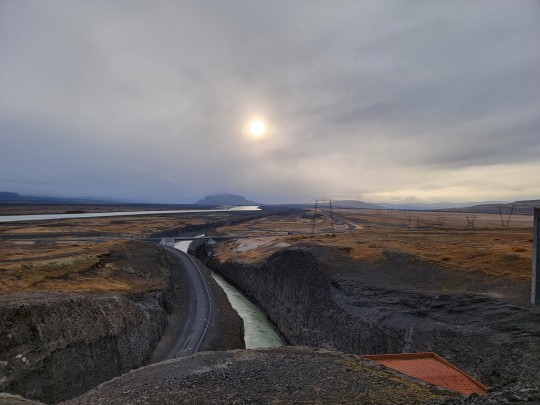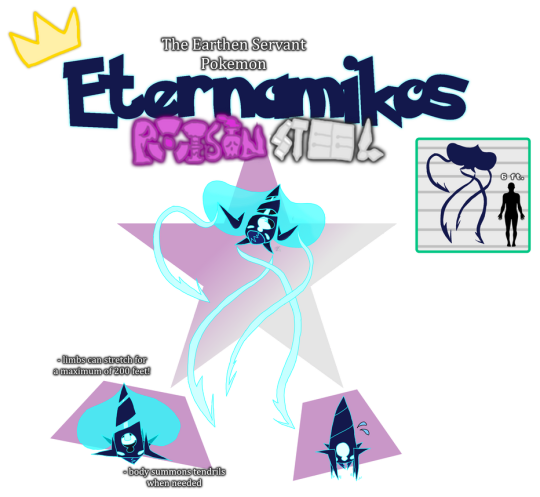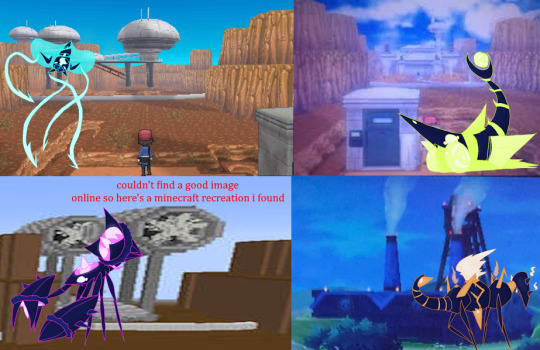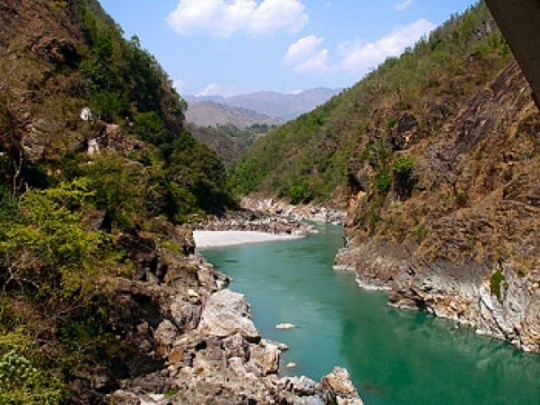#hydroelectric project
Text
Significant Progress in India-Nepal Hydroelectric Project
Kathmandu, Jun 5 (Prensa Latina) Nepal’s Prime Minister Pushpa Kamal Dahal today witnessed the last blast marking the end of tunnel excavation of the joint hydroelectric project with India in Nepal’s Sankhuwasabha district.
The binational cooperation aims to improve regional energy security and boost economic development through sustainable hydropower generation in the Arun River basin,…

View On WordPress
#Arun-3 Hydropower Project#hydroelectric project#Pushpa Kamal Dahal#regional energy security#Shakti Bahadur Basnet#sustainable hydropower generation
0 notes
Text
Russia. Svir River. Upper Svir Hydroelectric Station, lock
Свирь. Верхнесвирская ГЭС, шлюз
#2016#hydroelectric station#july#leningrad oblast#lock#motorship#project 302#river#river passenger ships#russia#ship#summer#svir river#upper svir hydroelectric station#верхнесвирская гэс#гэс#июль#ленинградская область#лето#проект 302#река#россия#свирь#теплоход#теплоход михаил шолохов#шлюз#электростанция#power station#flickr#russian tumblr
10 notes
·
View notes
Text

Sultartangavirkjun Hydroelectric Plant - October 7th 2023
#notice how deep they dug an outflow? this is a large infrastructure project in the middle of nowhere#there's a bigger dam up river iceland has a habit of trying to contain glacial melt flows#this scale is common in greenland which is why i was here...parallel research#iceland#highlanda#hydroelectric infrastructure#renewableenergy
10 notes
·
View notes
Text




Finally got to making a Legendary group i wanted to make since i tapped into the South Kalos project!
And it's based on unused content in X and Y and a callback to it 6 years later in Sword and Shield where they introduce a nuclear space whale dragon skeleton... thing.
these thing all have like 570 total base stat since i forgot to mention that back on dA

Eternamikos || Eternawirl
Eternaventi || Eternafurna
Make sure to check these links out before you go! Please...?
-Twitter-
-Tumblr-
-DeviantArt-
-Newgrounds-
-FurAffinity-
-Discord Channel-
#pokemon#fakemon#pokemon xy#poison type#steel type#electric type#psychic type#fire type#eternatus#pokemon swsh#south kalos project#geothermal#hydroelectricity#wind energy#fossil fuels
7 notes
·
View notes
Text

i am- very aware that i dont draw often- trust me- wish i could- pretty sure my art is regressing-love it
he's dating aquaman
#my art#art#digital drawing#digital art#superhero#this was for a science project#idk man#hydroelectric
9 notes
·
View notes
Text
working for a small company is funny. my coworkers are the company owner/co-founder, the other co-founder (“my boss”), the owner’s wife, my mom, an IT support guy who only comes in occasionally, and a bunch of new people who were hired after me and my mom
#ray speaks#work stuff#it doesnt FEEL like im working for a little start-up; it's very legit & the people running it are very experienced#we're working on a huge project for the company that provides hydroelectricity for basically the entire province.#and yet. theres like 5 of us (a lot more than 5 now but for the first couple months there WERE just 5 of us)
3 notes
·
View notes
Text
Sawra-Kuddu Hydroelectric Project: Harnessing the Power of Himalayan Rivers
The Sawra-Kuddu Hydroelectric Project is a run-of-the-river hydroelectric power plant located in Sawra Rohru, Himachal Pradesh. It harnesses the power of the Pabbar River, a tributary of the Yamuna River, to generate clean and renewable energy for the state.
The project is a joint venture between the Himachal Pradesh State Electricity Board (HPSEB) and the National Hydroelectric Power…

View On WordPress
0 notes
Text
The Klamath River’s salmon population has declined due to myriad factors, but the biggest culprit is believed to be a series of dams built along the river from 1918 to 1962, cutting off fish migration routes.
Now, after decades of Indigenous advocacy, four of the structures are being demolished as part of the largest dam removal project in United States history. In November, crews finished removing the first of the four dams as part of a push to restore 644 kilometres (400 miles) of fish habitat.
“Dam removal is the largest single step that we can take to restore the Klamath River ecosystem,” [Barry McCovey, a member of the Yurok Tribe and director of tribal fisheries,] told Al Jazeera. “We’re going to see benefits to the ecosystem and then, in turn, to the fishery for decades and decades to come.” ...
A ‘watershed moment’
Four years later, [after a catastrophic fish die-off in 2002,] in 2006, the licence for the hydroelectric dams expired. That created an opportunity, according to Mark Bransom, CEO of the Klamath River Renewal Corporation (KRRC), a nonprofit founded to oversee the dam removals.
Standards for protecting fisheries had increased since the initial license was issued, and the utility company responsible for the dams faced a choice. It could either upgrade the dams at an economic loss or enter into a settlement agreement that would allow it to operate the dams until they could be demolished.
“A big driver was the economics — knowing that they would have to modify these facilities to bring them up to modern environmental standards,” Bransom explained. “And the economics just didn’t pencil out.”
The utility company chose the settlement. In 2016, the KRRC was created to work with the state governments of California and Oregon to demolish the dams.
Final approval for the deal came in 2022, in what Bransom remembers as a “watershed moment”.
Regulators at the Federal Energy Regulatory Commission (FERC) voted unanimously to tear down the dams, citing the benefit to the environment as well as to Indigenous tribes...
Tears of joy
Destruction of the first dam — the smallest, known as Copco 2 — began in June, with heavy machinery like excavators tearing down its concrete walls.
[Amy Cordalis, a Yurok Tribe member, fisherwoman and lawyer for the tribe,] was present for the start of the destruction. Bransom had invited her and fellow KRRC board members to visit the bend in the Klamath River where Copco 2 was being removed. She remembers taking his hand as they walked along a gravel ridge towards the water, a vein of blue nestled amid rolling hills.
“And then, there it was,” Cordalis said. “Or there it wasn’t. The dam was gone.”
For the first time in a century, water flowed freely through that area of the river. Cordalis felt like she was seeing her homelands restored.
Tears of joy began to roll down her cheeks. “I just cried so hard because it was so beautiful.”
The experience was also “profound” for Bransom. “It really was literally a jolt of energy that flowed through us,” he said, calling the visit “perhaps one of the most touching, most moving moments in my entire life”.
Demolition on Copco 2 was completed in November, with work starting on the other three dams. The entire project is scheduled to wrap in late 2024.
[A resilient river]
But experts like McCovey say major hurdles remain to restoring the river’s historic salmon population.
Climate change is warming the water. Wildfires and flash floods are contaminating the river with debris. And tiny particles from rubber vehicle tires are washing off roadways and into waterways, where their chemicals can kill fish within hours.
McCovey, however, is optimistic that the dam demolitions will help the river become more resilient.
“Dam removal is one of the best things we can do to help the Klamath basin be ready to handle climate change,” McCovey explained. He added that the river’s uninterrupted flow will also help flush out sediment and improve water quality.
The removal project is not the solution to all the river’s woes, but McCovey believes it’s a start — a step towards rebuilding the reciprocal relationship between the waterway and the Indigenous people who rely on it.
“We do a little bit of work, and then we start to see more salmon, and then maybe we get to eat more salmon, and that starts to help our people heal a little bit,” McCovey said. “And once we start healing, then we’re in a place where we can start to help the ecosystem a little bit more.”"
-via Al Jazeera, December 4, 2023
#indigenous#river#riverine#ecosystem#ecosystem restoration#klamath#klamath river#oregon#california#yurok#fishing#fisheries#nature is healing#literally this time lol#united states#dam removal#climate change#conservation#sustainability#salmon#salmon run#water quality#good news#hope#rewilding#ecology#environment
5K notes
·
View notes
Text
Things Biden and the Democrats did, this week #7
Feb 23-March 1 2024
The White House announced $1.7 Billion in new commitments from local governments, health care systems, charities, business and non-profits as part of the White House Challenge to End Hunger and Build Healthy Communities. The Challenge was launched with 8 billion dollars in 2022 with the goal of ending hunger in America by 2030. The Challenge also seeks to drastically reduce diet-related diseases (like type 2 diabetes). As part of the new commitments 16 city pledged to make plans to end hunger by 2030, the largest insurance company in North Carolina made nutrition coaching and a healthy food delivery program a standard benefit for members, and since the challenge launched the USDA's Summer EBT program has allowed 37 states to feed children over the summer, its expected 21 million low income kids will use the program this summer.
The US House passed a bill on Nuclear energy representing the first update in US nuclear energy policy in decades, it expands the Nuclear Regulatory Commission and reduces reducing licensing fees. Nuclear power represents America's single largest source of clean energy, with almost half of carbon-free electricity coming from it. This bill will boost the industry and make it easier to build new plants
Vice President Harris announced key changes to the Child Care & Development Block Grant (CCDBG) program. The CCDBG supports the families of a million American children every month to help afford child care. The new changes include capping the co-pay families pay to no more than 7% of their income. Studies show that high income families pay 6-8% of their income in childcare while low income families pay 31%. The cap will reduce or eliminate fees for 100,000 families saving them an average of over $200 a month. The changes also strength payments to childcare providers insuring prompt payment.
The House passed a bill making changes to the Small Business Administration’s 8(a) program. The 8(a) is an intensive 9 year program that offers wide ranging training and support to small business owners who are socially and economically disadvantaged, predominantly native owned businesses. Under the current structure once a business reaches over 6.8 million in assets they're kicked off the program, even though the SBA counts anything under $10 million as a small business, many companies try to limit growth to stay on the program. The House also passed a bill to create an Office of Native American Affairs at the SBA, in order to support Native-owned small businesses.
The White House and HUD announced steps to boost the housing supply and lower costs plans include making permanent the Federal Financing Bank Risk Sharing program, the program has created 12,000 affordable housing units since 2021 with $2 billion and plans 38,000 additional units over ten years. As well as support for HUD's HOME program which has spent $4.35 billion since 2021 to build affordable rental homes and make home ownership a reality for Americans. For the first time an administration is making funds available specifically for investments in manufactured housing, $225 million. 20 million Americans live in manufactured housing, the largest form of unsubsidized affordable housing in the country, particularly the rural poor and people in tribal communities.
The Department of Energy announced $336 million in investments in rural and remote communities to lower energy costs and improve reliability. The projects represent communities in 20 states and across 30 Native tribes. 21% of Navajo Nation homes and 35% of Hopi Indian Tribe homes remain unelectrified, one of the projects hopes to bring that number to 0. Another project supports replacing a hydroelectric dam in Alaska replacing all the Chignik Bay Tribal Council's diesel power with clear hydro power. The DoE also announced $18 million for Transformative Energy projects lead by tribal or local governments and $25 million for Tribal clean energy projects, this comes on top of $75 million in Tribal clean energy projects in 2023
Transportation Secretary Pete Buttigieg put forward new rules to ensure airline passengers who use wheelchairs can travel safely and with dignity. Under the planned rules mishandling a wheelchair would be a violation of the ACAA, airlines would be required to immediately notify the passenger of their rights. Airlines would be required to repair or replace the wheelchair at the preferred vendor of the passenger's choice as well as provide a loaner wheelchair that fits the passenger's needs/requirements
The EPA launched a $3 Billion dollar program to help ports become zero-emission. This investment in green tech and zero-emission will help important transportation hubs fight climate change and replace some of the largest concentrations of diesel powered heavy equipment in America.
the EPA announced $1 Billion dollars to help clean up toxic Superfund sites. This is the last of $3.5 billion the Biden administration has invested in cleaning up toxic waste sites known as Superfund sites. This investment will help finish clean up at 85 sites across the country as well as start clean up at 25 new sites. Many Superfund sites are contained and then left not cleaned for years even decades. Thanks to the Biden-Harris team's investment the EPA has been able to do more clean up of Superfund sites in the last 2 years than the 5 years before it. More than 25% of America's black and hispanic population live with-in 5 miles of a Superfund site.
Bonus: Sweden cleared the final major barrier to become NATO's 32nd member. The Swedish Foreign Minster is expected to fly to Washington to deposit the articles of accession at the US State Department. NATO membership for Sweden and its neighbor Finland (joined last year) has been a major foreign policy goal of President Biden in the face of Russian aggressive against Ukraine. Former President Trump has repeatedly attacked NATO and declared he wants to leave the 75 year old Alliance, even going so far as to tell Russia to "do whatever the hell they want" with European NATO allies
#Thanks Biden#Joe Biden#Politics#US politics#Democrats#Climate change#end hunger#hunger#proverty#disability#native Americans#tribal rights#clean energy#child care#housing#housing crisis
768 notes
·
View notes
Text
Harnessing the Potential of the Kali Gandaki River with a 38.16 MW Project Proposal in Gaindakot
KATHMANDU, May 4: A proposal for the construction of a 38.16 megawatt Kalika Gandaki hydroelectric project has been put forth in Devghat, Tanahun, and the Gaindakot area of Nawalpur, utilizing water from the Kaligandaki River to generate electricity.
The Department of Electricity Development has issued a public notice on Saturday and asked for suggestions from the stakeholders regarding the…

View On WordPress
#38.16 megawatt Kalika Gandaki hydroelectric project#Electricity Development#Maula Kalika Hydropower Company Limited
0 notes
Text

Why should low-carbon projects be permitted to destroy legendary Native American sacred sites? Yakama elders witnessed the construction of The Dalles Dam that flooded and silenced Celilo Falls on the Columbia River. Since time immemorial, Celilo Falls was one of history’s great marketplaces. Multiple tribes had permanent villages near the falls. Thousands of people gathered annually to trade, feast, and participate in games and religious ceremonies over millennia. During spring, this natural monument surged up to 10 times the amount of water that passes over Niagara Falls today.
What must Indigenous people continue to sacrifice for energy development? The Seattle Times editorial board recently announced support for the Goldendale pumped-storage hydroelectric project to benefit the state’s clean-energy portfolio [“Goldendale energy project can help meet state’s clean-energy needs,” Sept. 2, Opinion]. The board constructed an alternate reality where tribal nations could find common ground with the developer and resolve objections to project construction. The board wrote, “A compromise that would allow the project to go forward while respecting tribal concerns would be a benefit for all.” The board ignores the realities of Native American history and the history of this project, which the Confederated Tribes and Bands of Yakama Nation (Yakama Nation) have objected to from the initial development proposal at this site.
The project site is situated on Pushpum — a sacred site to the Yakama Nation, a place where there is an abundance of traditional foods and medicines. The developer’s footprint proposes excavation and trenching over identified Indigenous Traditional Cultural Properties, historic and archaeological resources and access to exercise ceremonial practices and treaty-gathering rights.
Notably, the project site covers the ancestral village site of the Willa-witz-pum Band and the Yakama fishing site called As’num, where Yakama tribal fishermen continue to practice their treaty-fishing rights.
Yakama Nation opposes the development. The developer proposes two, approximately 60-acre reservoirs and associated energy infrastructure within the Columbia Hills near the John Day Dam and an existing wind turbine complex. The majority of the nearly 700 acre site is undeveloped; the lower reservoir would be located on a portion of the former Columbia Gorge Aluminum smelter site. The tribe’s treaty-reserved right to exercise gathering, fishing, ceremony and passing of traditions in the area of the proposed project has existed since time immemorial. The tribe studied mitigation; it is impossible at this site.
Columbia Riverkeeper, and more than a dozen other nonprofits, stand in solidarity with Yakama Nation and oppose the development: The climate crisis does not absolve our moral and ethical responsibilities. Both tribal nations and environmental organizations have worked tirelessly to stop fossil fuel developments and secure monumental climate legislation in the Pacific Northwest. But we refuse to support a sacrifice zone to destroy Native American cultural and sacred sites in the name of combating climate change.
Environmental justice is on the line with the pumped-storage development. Seventeen tribal leaders sent a letter to Gov. Jay Inslee, urging him to reject development permits. The leaders explained, “Our ancestors signed Treaties with the United States, often under threat of violence and death, in exchange for our ancestral lands and sacred places. Through these treaties, we retain the rights to practice and live in our traditional ways in these places. Yet, the promises made by the government have been broken time and time again.”
Earlier this year, the Washington State Office of Equity, located within the governor’s office, released the state’s inaugural five-year Washington State Pro-Equity Anti-Racism Plan & Playbook. Gov. Inslee stated, “We will no longer replicate and reinforce systems, processes and behaviors that lead to inequities and disparities among various communities.” Now is the time to apply the playbook to climate change and energy siting.
There is no room for compromise. The choice is stark: Continue to advance our nation’s and state’s history of sacrificing Indigenous resources through broken promises, or work with tribes committed to tackling the climate crisis while, at the same time, protecting the last remaining sacred sites.
---
Text by: Jeremy Takala and Lauren Goldberg. “Stop sacrificing Indigenous sacred sites in the name of climate change.” The Seattle Times. 25 September 2022.
4K notes
·
View notes
Text
Russia. Svir River. Cruise ship "Mikhail Sholokhov" in the lock Upper Svir Hydroelectric Station
Свирь. Теплоход "Михаил Шолохов" в шлюзе Верхнесвирской ГЭС
#2016#hydroelectric station#july#leningrad oblast#lock#motorship#project 302#river#river passenger ships#russia#ship#summer#svir river#upper svir hydroelectric station#верхнесвирская гэс#гэс#июль#ленинградская область#лето#проект 302#река#россия#свирь#теплоход#теплоход михаил шолохов#шлюз#электростанция#power station#flickr#russian tumblr
5 notes
·
View notes
Text
Sci-fi worldbuilding ideas for your city planets :)
If the planet is entirely city, where does the oxygen come from? Are their farms dedicated to producing oxygen? Special factories? Are there plants that produce oxygen very quickly all over the planet? Do you have to pay an oxygen tax?
Does the planet have natural water? Are the oceans untouched, incorporated into the city, or have they been drained and the water used for things in the city? What is it used for? Drinking, dams, hydroelectricity, food production, etc?
How deep does the city go? Has the planet been mined into to create more space? Is geothermal energy used? Are the bottom levels reserved for things such as sewage, electricity production, factories, prisons, etc?
What is transportation like? Are there roads, floating roads, or are trains and trams used instead? Are planes used? Is transportation fast enough to quickly travel across time zones?
How is food produced? Is it imported, or is it grown on planet? A combination? Think about greenhouses, factorised farms, vertical farming projects, etc. If oceans are left relatively untouched, is food produced in it? Are fish kept? Are there ration laws?
Are the poles less occupied than the rest of the city? Are they used for storing frozen goods, super computers? On a planet with no oceans, is ice and snow valuable?
The same goes for the equator of the planet. Is it more or less occupied? Is the heat used for anything? Are there solar panel farms? Air conditioning?
Are there parks and protected areas of nature? Ancient gardens, important forests, sacred land? Are there laws about chopping down trees? Are there farms for trees and plants? Are their plant shops, and are they expensive? In Star Wars, a part of Coruscant's highest mountain is a public monument that you can look at - are parts of mountains, rare ores, fossils, etc, preserved?
Not all sci-fi cities look the same. Coruscant has skyscrapers arranged in a very chaotic manner, stretching incredibly deep and incredibly high, and there is almost no plant life or natural parts of the planet to be seen. Xandar is arranged neatly with very similar style buildings whilst remaining relatively low rising compared to other city planets, and has lots of greenery and a fairly untouched ocean. Wakanda is relatively defined in layout, with a mixture of plants and buildings, houses and skyscrapers, with every building being unique. Draw inspiration from whatever you like.
Write whatever you want, even if it's common or cliche. It doesn't matter if it has been done before, because it hasn't yet been written by you.
Happy worldbuilding!
#writing advice#writing#worldbuilding#world building#sci fi#sci fi worldbuilding#alien worldbuilding#planet worldbuilding#writing ideas#writing prompts#worldbuilding ideas#worldbuilding prompt#worldbuilding prompts#science fiction#planet ideas#fanfic prompt#fanfiction prompts#writing prompt#fanfiction ideas#city planets
298 notes
·
View notes
Text
The removal of dams from PNW rivers is one of the best ways to help salmon survive. We've seen in multiple cases where aquatic ecosystems have rebounded even faster than expected once a dam is removed and the water is allowed to flow naturally. This isn't just beneficial to local and regional ecology, but to indigenous communities who have relied on the salmon since time immemorial.
Yes, hydroelectric dams have provided clean energy for decades, which often makes getting rid of them a tough sell, both for people concerned about energy stability in general, and those wanting to reduce reliance on fossil fuels. However, we have other options that have less impact; windmills are increasing on the Western landscape, and a study a few years ago showed that solar power could replace the capacity of existing hydroelectric dams using a fraction of the space.
Are there details to iron out? Of course. While windmills are not the massive killers of birds and bats that the fossil fuel industry tries to paint them as, we do need to address the existing wildlife mortality--and people are already doing just that. Solar panels also need to be carefully placed, and materials sourced and recycled as sustainably as possible.
But when compared to the massive amount of resources used to build and maintain hydroelectric dams, and the immense negative impact on salmon and their aquatic ecosystems, wind and solar power are much better options for the long-term, especially if we keep putting effort into solving the problems of environmental impact, energy storage, and overall sustainability. The fact of the matter is that ANY form of energy we create is going to have some negative effects on the planet. But we can choose to engage in as much damage control as possible, and focus on solutions that take both human energy needs AND the rest of nature into account.
#hydroelectric dams#salmon#sustainability#clean energy#climate change#wildlife#animals#nature#environment#conservation#environmentalism#ecology#Pacific Northwest#North America#PNW#endangered species#extinction
186 notes
·
View notes
Text
Most of my friends have useful skills of their own. While I pride myself on being a self-reliant generalist, it's good to know there is expert help waiting in the wings if I run into a particularly sticky problem. I am sure that you are in a similar circumstance. It's always good to take a moment to study your situation, understand what resources you have, and treasure your connections.
Which of your buds, pals, hangers-on, flunkies, and general acquaintances would you rely on to, say, demolish a bridge? And more importantly, which of them would keep their mouths shut about it? Those are the folks you need to stay close to over the rest of your life. While it's unlikely that you'll be asked to blow up some perfectly good car infrastructure, the combination of skills and loyalty will come in handy many more times, from lawnmower repair to blowing up a hydroelectric dam.
Without these folks waiting to help, I would no doubt find myself holding back from stupid projects. Fearing failure, I wouldn't be nearly as ambitious. This way, I can exceed my limits, get myself well and truly stuck, and then wail to one of my pals, who will ask me if I remembered to plug the battery in. Of course I haven't, and we'll all have a good chuckle about it at my expense while sitting around a freshly doused campfire, making sure to cover our flashlights, and not use a dense amount of high-speed cellular data, in case the passing patrol drones notice unusual activity on the electromagnetic spectrum.
Go out there, talk to your friends. Collaborate on your interests. Get something started out there today, and make sure that you leave your mark on the world. Because if you just sit on the couch, then the bastards win, and they won't be nearly as weird about it as you will be.
149 notes
·
View notes
Text
When thinking about forms of degradation it is important to understand that violence is not only an event but can become a material structure. A spirit of violence becomes built into the geography itself – in the qualities of neighborhoods and workplaces, and in the prevalence or lack of healthcare, educational facilities, transportation, sanitation, and electricity. Built environments perpetuate lifestyles and practices that either frustrate or cherish life, that keep people apart or bring them together. What we build in the world communicates what we think of the world, and what we value about its inhabitants.
Consider just some of the defining material structures of the modern world:
reservations that confine indigenous peoples to undesirable land
the privatization and enclosure of agricultural land traditionally held in common
“sacrifice zones” where mining companies leave their toxic waste
massive hydroelectric projects that displace indigenous communities and alter ecosystems
mountaintop removal mining that flattens peaks and fills creeks with debris
vast fields of monoculture agriculture that depend on toxic herbicides and synthetic fertilizers to maximize commodity production
the large confinement animal feeding operations (CAFOs) that mistreat livestock and pollute surrounding watersheds
“cancer alleys” where people live on land or along waterways polluted by toxic industrial chemicals
public housing projects that consign residents to inhumane living conditions
massive slums in the world’s growing megacities that lack the infrastructure to meet the basic needs of residents
the many “camps” – work camps, death camps, POW camps, internment camps, refugee resettlement camps – constructed in response to war, political persecution, and climate instability
These sites are not accidental, nor are they located on the periphery. They are foundational structures upon which the modern world has been built and which it continues to develop.
This grim geography alerts us to the fact that the young people of our time are inheriting built environments with considerably diminished fertility, biodiversity, and health. They are being asked to imagine their futures in a world that is increasingly polluted, ugly, and uninviting, while living in built environments poorly designed to facilitate flourishing.
Can people live in hope if their homes and places of work do not nurture and celebrate life?
61 notes
·
View notes




